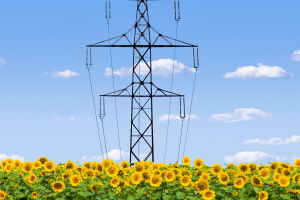Sailing is a fascinating and exhilarating sport enjoyed by many people worldwide. Unfortunately, there are still many misconceptions about sailing that can deter people from trying it out.
Let's take a closer look at sailing to better understand the sport and clear up some of these misconceptions.
One common misconception is that sailboats are powered solely by the wind. While the wind is undoubtedly a crucial factor in propelling a sailboat forward, it is not the only source of power. The Bernoulli effect, which causes an upward and forward force when air flows through an arc similar to a wing, also contributes to a sailboat's propulsion.
However, this effect disappears when sailing downwind, and sailboats can no longer reach their maximum speed.
Sailboats come in various shapes and sizes, from small dinghies to large yachts. A single mast with multiple sails is the most common setup and typically includes a mainsail and a triangular foresail.
The mast supports the sails, and some sailboats require jib rigging to connect the mast to the hull. The rigging used to operate the sails is called sail control rigging, and it includes mainsail control rigging, foresail control rigging, aft halyard, mainsail hoist rigging, downhaul rigging, and diagonal halyard or luff diagonal puller.
Multihull sailboats are generally faster than monohulls due to their design, which includes two or more hulls instead of the single hull of a monohull. The front part of the hull is called the bow, and it is typically pointed, but some small sailing ships less than ten feet long may have a square bow, such as those of the OP class.
Sailing has a long and rich history. Francis Drake, the explorer, became the second man after Magellan to complete a voyage around the world on a sailing ship. Today, sailing is no longer the primary tool of navigation but has evolved into a fashionable water sport.
Windsurfing is a newer water sport that combines elements of sailing and surfing. A windsurfer includes a board, a mast with a gimbal, and a sail. The sail is steered by a pole that moves the board through the water, changing the wind's center on the sail and the board's center of gravity.
The floating body of a sailboard is the pontoon, while the floating body of a sailboat is the hull.
Some people believe that owning a sailboat or yacht is a measure of wealth in coastal areas. However, those who love sea sports recognize that sailboat and yacht owners are not always part of the same circle.
While both are used for recreation, sailboats rely on the wind and are highly specialized, while yachts typically rely on engines for power and emphasize comfort and appearance.
Sailing is a specialized and exciting sport that involves the use of wind and other forces to propel a sailboat forward. While many people believe sailboats are powered solely by the wind, the Bernoulli effect also plays a crucial role in a sailboat's propulsion.
Sailing has a rich history and has evolved into a fashionable water sport enjoyed by many people worldwide. Windsurfing is a newer sport that combines elements of sailing and surfing. Sailboats and yachts differ in their emphasis on power and comfort, but both offer recreational opportunities to enjoy the water.


